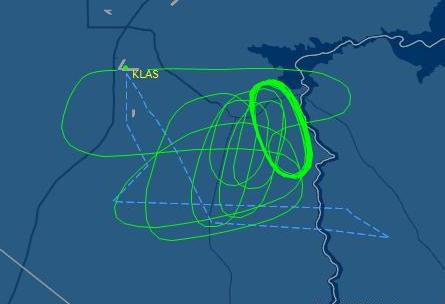The US National Transportation Safety Board (NTSB) is gathering data to determine whether to launch an investigation into the post-departure hydraulics failure that kept a JetBlue Airbus A320 in a holding pattern near the Las Vegas McCarran international airport for nearly four hours on 17 June.
JetBlue Flight 194, with 130 passengers and five crew members onboard, departed Las Vegas at 15:45 local time en route to New York's John F Kennedy airport. On climb-out, the pilots alerted air traffic controllers of problems, including issues with the hydraulics system, according to air traffic control recordings posted on LiveATC.net.
The pilots later declared an emergency, telling controllers they "lost two hydraulic systems" and would need to stay in a holding pattern close to the airport for more than 30 minutes to go through "lots of checklists" and to burn off enough of the 16,846kg (37,140lb) fuel load in order to land within normal weight limits.
 |
|---|
FLIGHTAWARE.COM |
Ground track for JetBlue 194 during holding pattern near Las Vegas |
JetBlue says that the pilots declared the emergency "due to the loss of one hydraulic system," adding that N552JB landed safely at the airport at 19:37, nearly four hours after takeoff, in a statement.
Flightglobal's Ascend Online database reveals that N552JB (serial number 1861) was built in 2002 and is powered by International Aero Engines V2500 turbofans. The aircraft is owned by GECAS. The aircraft is not listed in any earlier NTSB accident reports.
Statements from passengers reported in the media indicate the aircraft may have experienced flight control problems during the hours-long hold, but the there is not yet any information from the NTSB or the US Federal Aviation Administration confirming the in-flight behaviour of the aircraft.
A fly-by-wire twinjet, the A320 has three hydraulic systems powering a variety of flight control surfaces for redundancy.
Source: Air Transport Intelligence news























